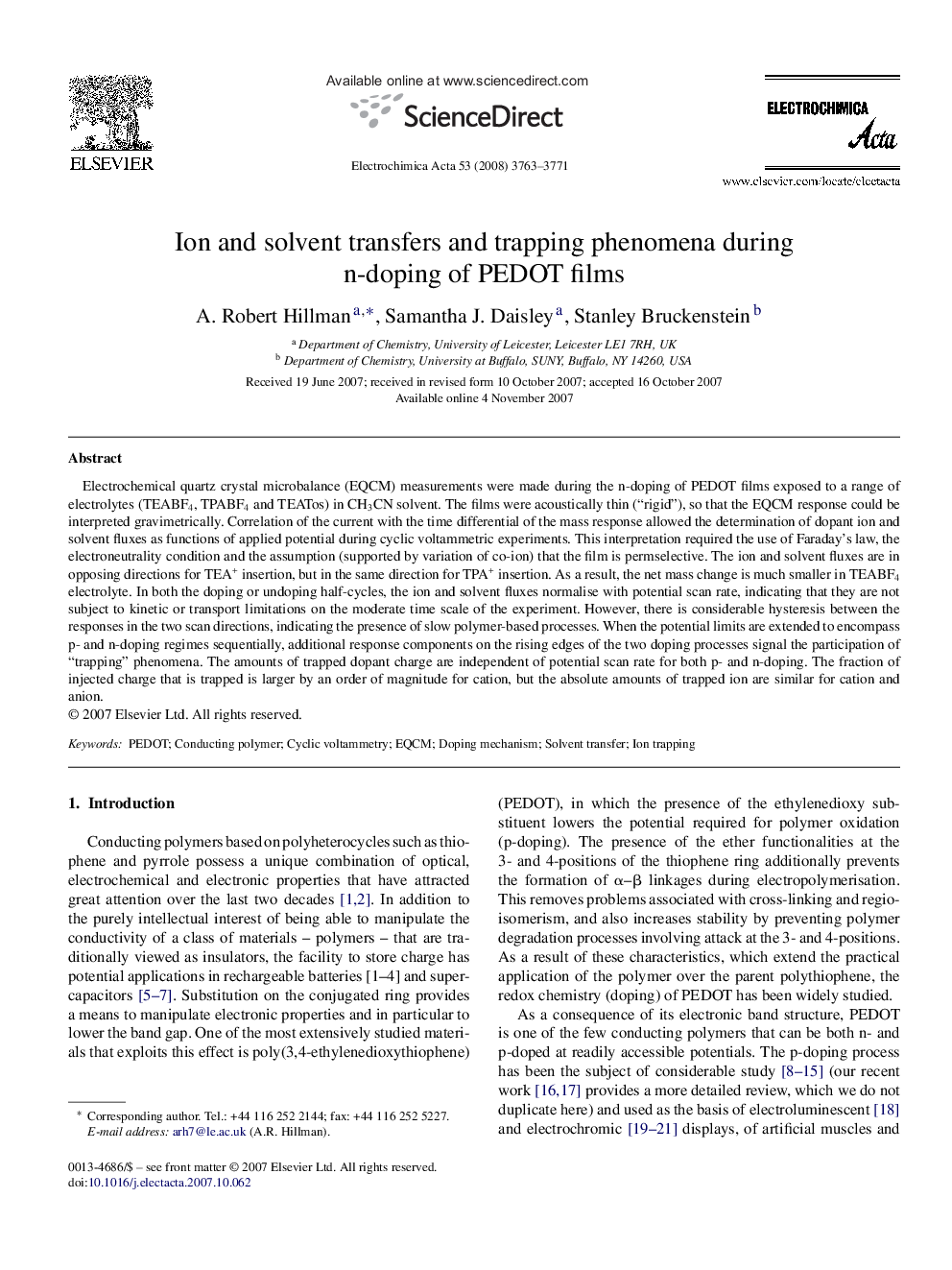| کد مقاله | کد نشریه | سال انتشار | مقاله انگلیسی | نسخه تمام متن |
|---|---|---|---|---|
| 195077 | 459806 | 2008 | 9 صفحه PDF | دانلود رایگان |

Electrochemical quartz crystal microbalance (EQCM) measurements were made during the n-doping of PEDOT films exposed to a range of electrolytes (TEABF4, TPABF4 and TEATos) in CH3CN solvent. The films were acoustically thin (“rigid”), so that the EQCM response could be interpreted gravimetrically. Correlation of the current with the time differential of the mass response allowed the determination of dopant ion and solvent fluxes as functions of applied potential during cyclic voltammetric experiments. This interpretation required the use of Faraday's law, the electroneutrality condition and the assumption (supported by variation of co-ion) that the film is permselective. The ion and solvent fluxes are in opposing directions for TEA+ insertion, but in the same direction for TPA+ insertion. As a result, the net mass change is much smaller in TEABF4 electrolyte. In both the doping or undoping half-cycles, the ion and solvent fluxes normalise with potential scan rate, indicating that they are not subject to kinetic or transport limitations on the moderate time scale of the experiment. However, there is considerable hysteresis between the responses in the two scan directions, indicating the presence of slow polymer-based processes. When the potential limits are extended to encompass p- and n-doping regimes sequentially, additional response components on the rising edges of the two doping processes signal the participation of “trapping” phenomena. The amounts of trapped dopant charge are independent of potential scan rate for both p- and n-doping. The fraction of injected charge that is trapped is larger by an order of magnitude for cation, but the absolute amounts of trapped ion are similar for cation and anion.
Journal: Electrochimica Acta - Volume 53, Issue 11, 20 April 2008, Pages 3763–3771